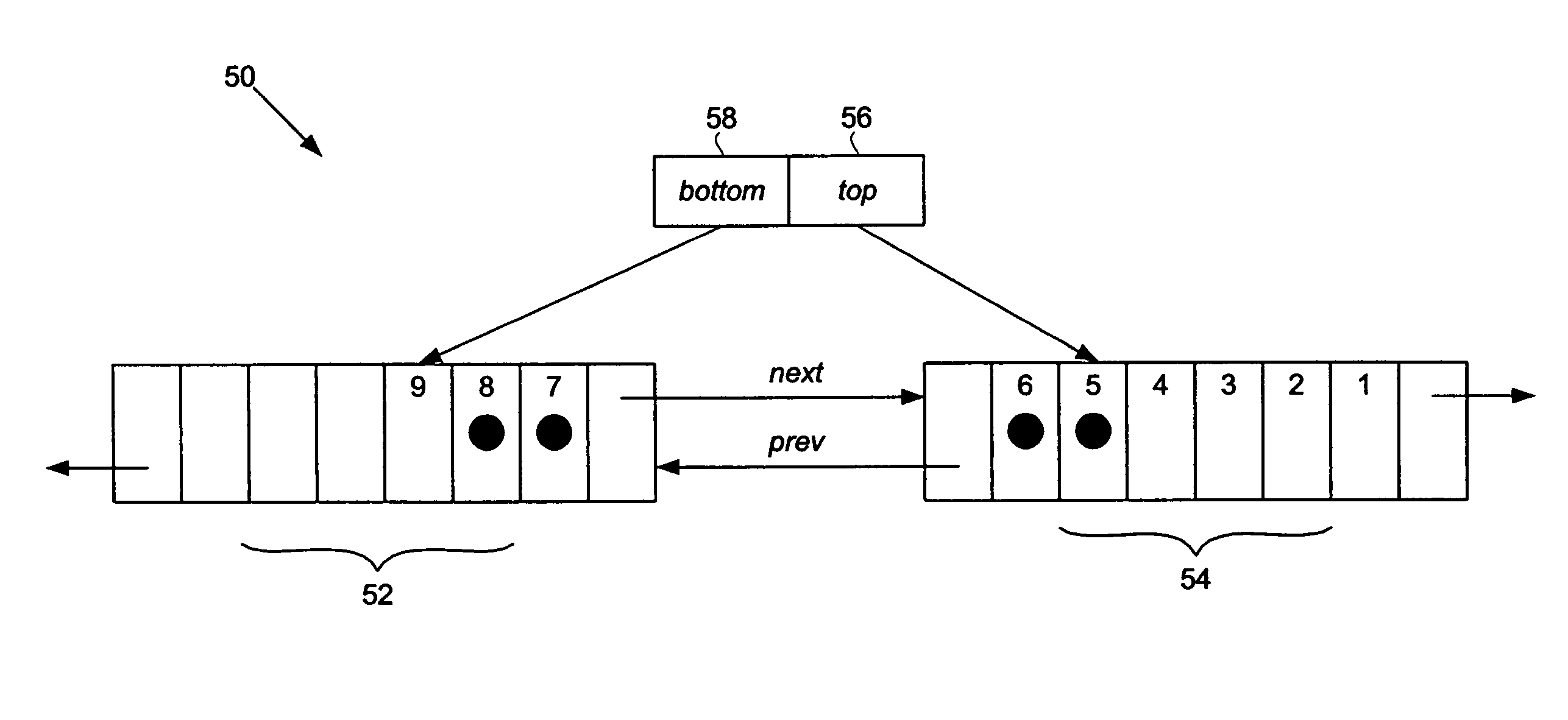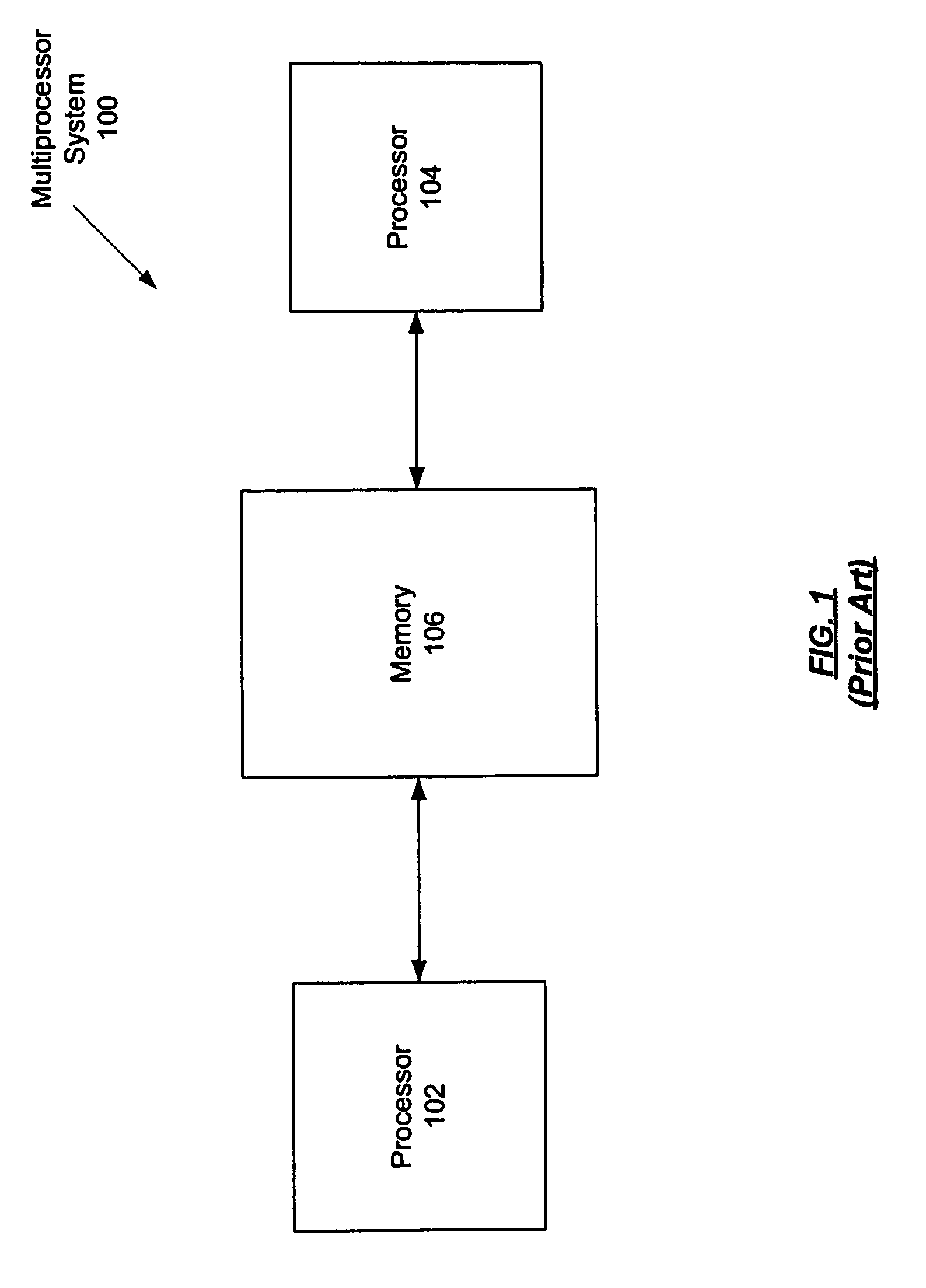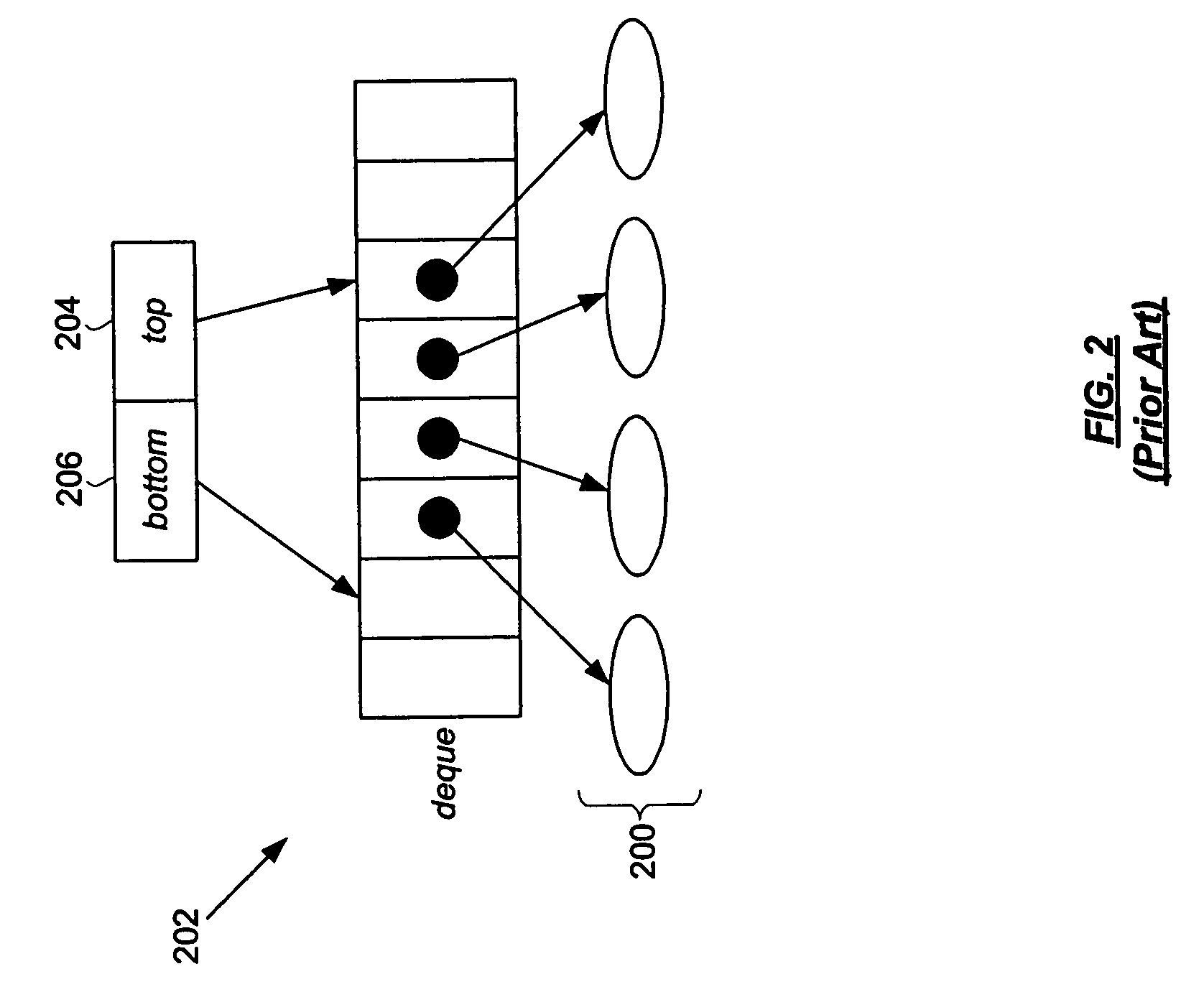Dynamic memory work-stealing
a technology of dynamic memory and work, applied in the field of dynamic memory work, can solve the problems of process becomes a thief, and designers often have to implement costly mechanisms to manage deque overflow,
- Summary
- Abstract
- Description
- Claims
- Application Information
AI Technical Summary
Benefits of technology
Problems solved by technology
Method used
Image
Examples
Embodiment Construction
[0028]Embodiments of the present invention relate to a dynamic memory work-stealing technique. FIG. 3 shows an exemplary implementation of a deque (50) in accordance with an embodiment of the present invention. The deque (50) is implemented as a doubly-linked list of nodes (52, 54), almost all or each of which is an array that may be dynamically allocated and freed from a shared node pool (not shown). The individual node entries may be updated to contain or remove values that point to threads (not shown) usable to perform work. Further, the deque (50) has a variable top (56) that references the node entry having the pointer to the “top” thread (not shown) and a variable bottom (58) that references the node entry immediately below the node entry having the pointer to the “bottom” thread (not shown).
[0029]In one or more embodiments of the present invention, the shared node pool maintains a local node pool of g nodes for each process. When the nodes in a local node pool of a process ar...
PUM
 Login to View More
Login to View More Abstract
Description
Claims
Application Information
 Login to View More
Login to View More - R&D
- Intellectual Property
- Life Sciences
- Materials
- Tech Scout
- Unparalleled Data Quality
- Higher Quality Content
- 60% Fewer Hallucinations
Browse by: Latest US Patents, China's latest patents, Technical Efficacy Thesaurus, Application Domain, Technology Topic, Popular Technical Reports.
© 2025 PatSnap. All rights reserved.Legal|Privacy policy|Modern Slavery Act Transparency Statement|Sitemap|About US| Contact US: help@patsnap.com



